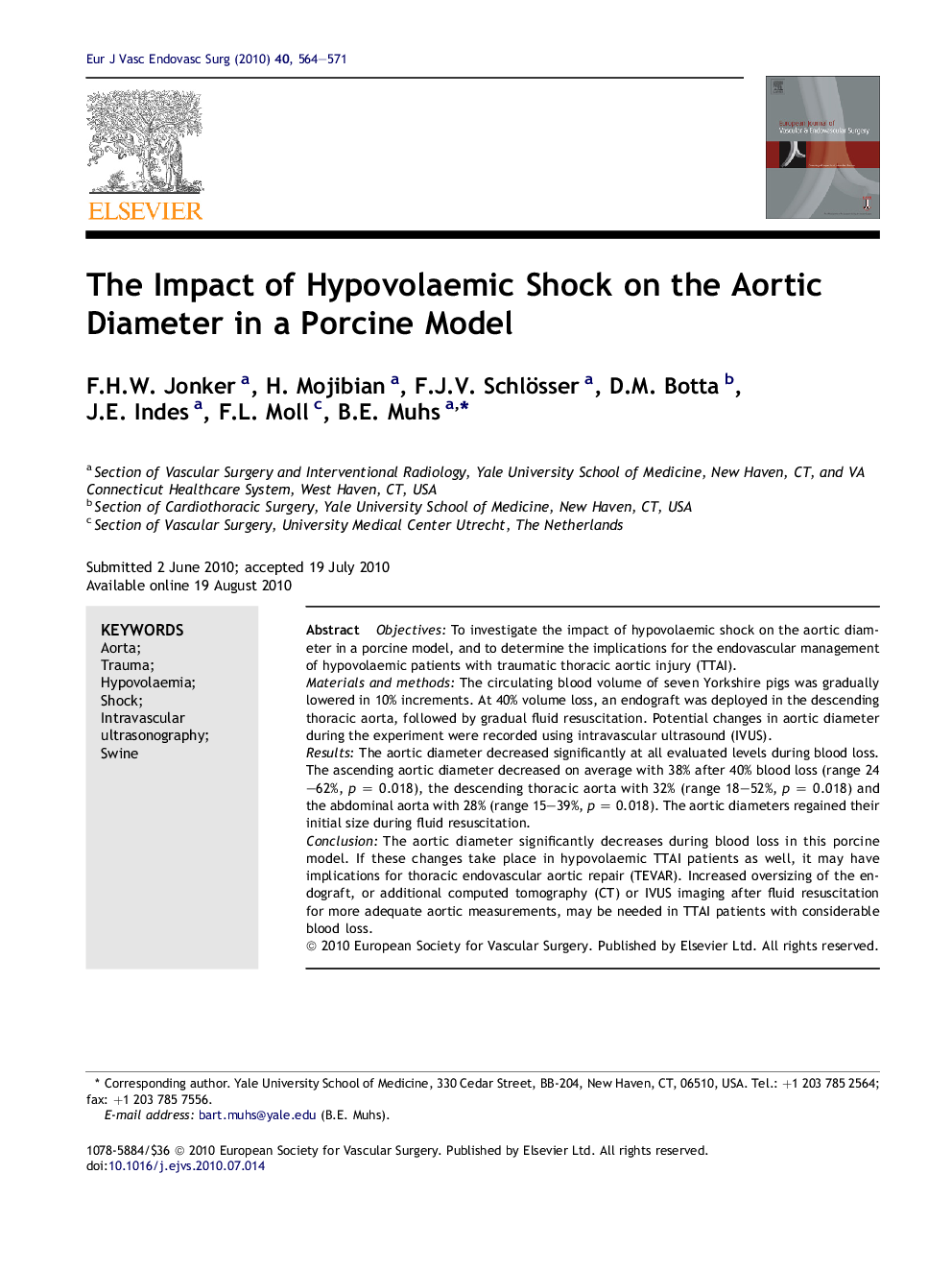| Article ID | Journal | Published Year | Pages | File Type |
|---|---|---|---|---|
| 2914068 | European Journal of Vascular and Endovascular Surgery | 2010 | 8 Pages |
ObjectivesTo investigate the impact of hypovolaemic shock on the aortic diameter in a porcine model, and to determine the implications for the endovascular management of hypovolaemic patients with traumatic thoracic aortic injury (TTAI).Materials and methodsThe circulating blood volume of seven Yorkshire pigs was gradually lowered in 10% increments. At 40% volume loss, an endograft was deployed in the descending thoracic aorta, followed by gradual fluid resuscitation. Potential changes in aortic diameter during the experiment were recorded using intravascular ultrasound (IVUS).ResultsThe aortic diameter decreased significantly at all evaluated levels during blood loss. The ascending aortic diameter decreased on average with 38% after 40% blood loss (range 24–62%, p = 0.018), the descending thoracic aorta with 32% (range 18–52%, p = 0.018) and the abdominal aorta with 28% (range 15–39%, p = 0.018). The aortic diameters regained their initial size during fluid resuscitation.ConclusionThe aortic diameter significantly decreases during blood loss in this porcine model. If these changes take place in hypovolaemic TTAI patients as well, it may have implications for thoracic endovascular aortic repair (TEVAR). Increased oversizing of the endograft, or additional computed tomography (CT) or IVUS imaging after fluid resuscitation for more adequate aortic measurements, may be needed in TTAI patients with considerable blood loss.
